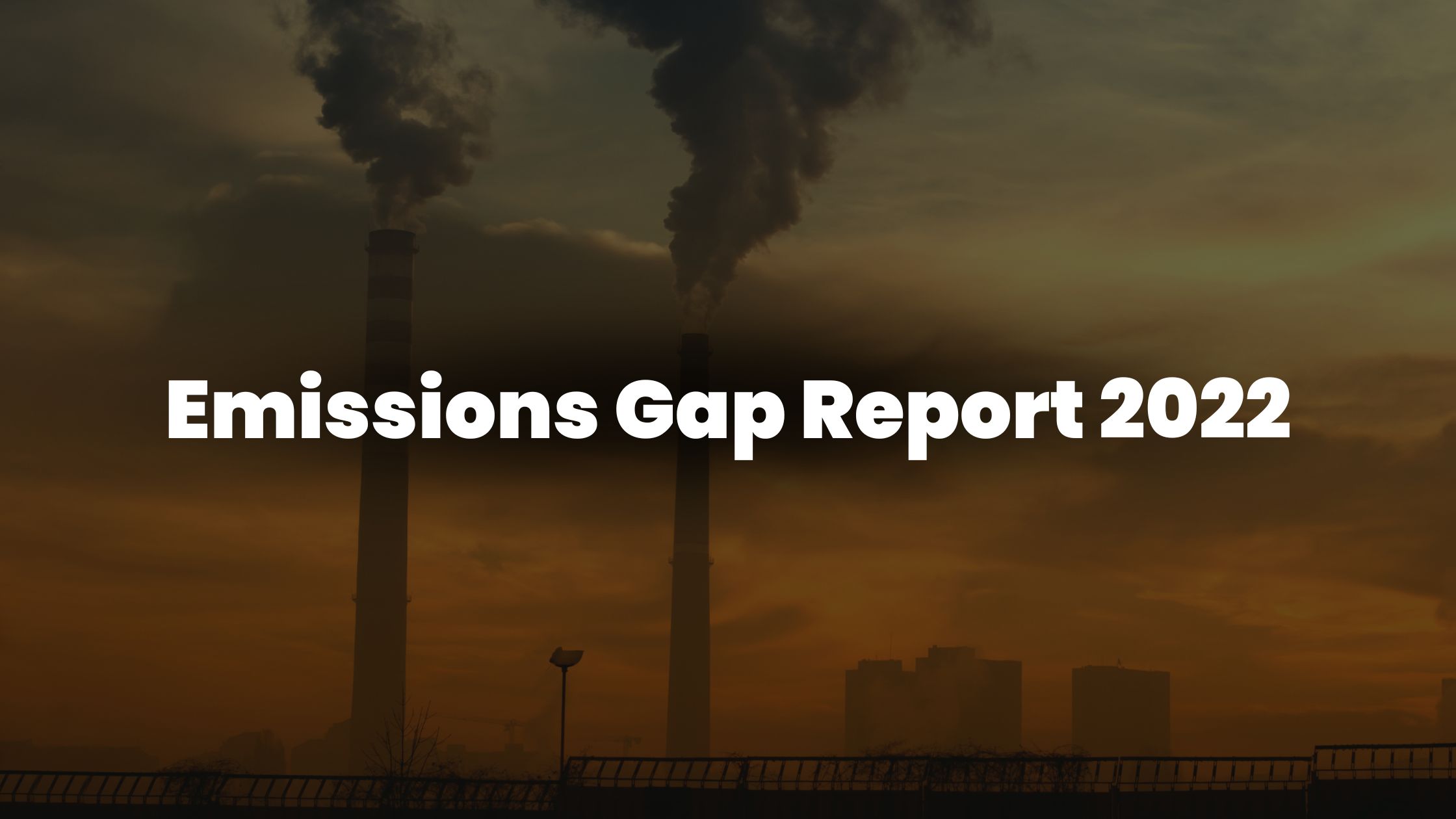Context:
- The 13th edition of EGR has released recently in 2022 by UNEP.
Key features EGR 2022:
- Report focused on the Trend of Global Greenhouse gas emissions.
- Report Prepared by: UNEP.
- Title of the Report: The Closing Window – Climate crisis calls for rapid transformation of societies
- Background: UNEP Copenhagen Climate Center (CCC) has started publishing it since 2011.
Major points of Emission Gap Report 2022:
- The research suggested a dire need of system-wide change and reduction in GHG emissions over the 8 years.
- The report has found that the world is not following the procedures to meet the targets outlined in the 2015 Paris Agreement.
- If the trends will continue, by 2100, the temp may increase by 2.8°C.
- If the world follow present climate promises the temperature increase will be restricted to 2.4 to 2.6°C.
- To meet the targets of the Paris Agreement by 2030, GHG emissions must be cut by 45%.
- Report suggested to achieve a low- carbon economy, annual investment of 4 to 6 trillion dollar (US) would be needed.
- Report has suggested that GHG in the past decade has slowed compared to the previous decade.
- In the last decade average GHG emissions were the highest on record.
Global Trends:
- Between 2010 and 2019
- average annual growth was 1.1 %
- Between 2000 and 2009.
- It was 2.6% per year
The top 7 emitters:
- China,
- the EU27,
- India,
- Indonesia,
- Brazil,
- The Russian Federation,
- United States of America (+ international transport)
contributed for 55% of global GHG emissions in 2020.
- G20 members are responsible for 75% of global GHG emissions.
- India remains below the world average at 2.4 tCO2e. (tone of carbon dioxide equivalent)
- The report highlighted that the food systems are prominent contributors to climate change and other environmental problems such as:
- Land-use change and biodiversity loss
- Depletion of freshwater resources
- Pollution of Marine and terrestrial ecosystem through nitrogen and phosphorus run-off from fertilizer.
- Organic farming’s contribution to the overall reduction in GHG emissions is debatable.
- An assessment by the UNEP and Climate and Clean Air Coalition in 2021 said that
- If we reduce the human or farming-related methane emissions by 45% in this decade, it will play a pioneer role in the global battle against climate change.
Recommendations:
- Substitute of technologies are needed in heavy industry to prevent the increase in the carbon intensity of global steel production.
- Presently, the unconditional and conditional NDCs (Nationally Determined Contributions) are expected to cut global emissions by 5% and 10%, respectively, by 2030.
India’s effort in cutting the Emissions is:
- In August 2022, the Cabinet approved an update of India’s NDC.
- The updated NDC has focused on major policies being pushed forward, including:
- Inclusion of agroforestry and private forestry
- Usage of solar agricultural pumps
- Clean cooking.
- Rooftop solar PV.
- The GoI is opting for coal gasification into chemical projects, and using ammonia, and hydrogen as future fuels.
- The Lok Sabha passed the Energy Conservation (Amendment) Bill on August 2022, aiming to
- Provide support for the establishment and development of domestic carbon markets.
Way forward:
- Australia, China, India, Iran, and the Russian Federation are large emitters have yet to join the Global methane pledge,
- The Glasgow Leaders’ Declaration on Forests and Land Use emphasize on the importance of the critical role of forests to meet sustainable development goals by 2030.
Date: 27.10.2022
Source: TH
By: Sudarshan Gurjar





0 Comments